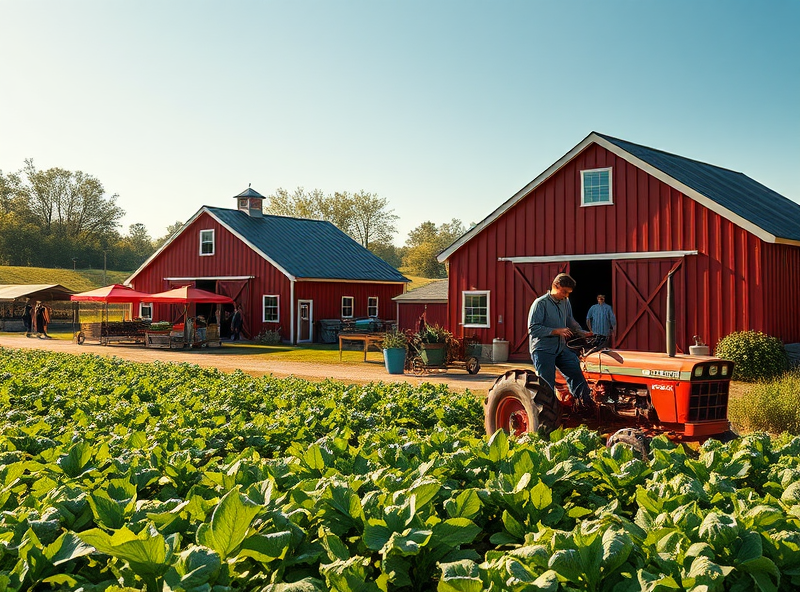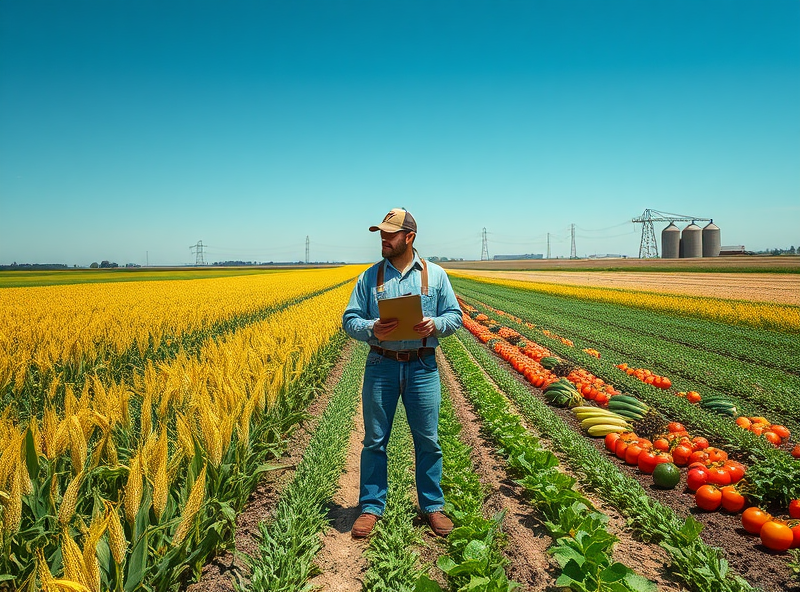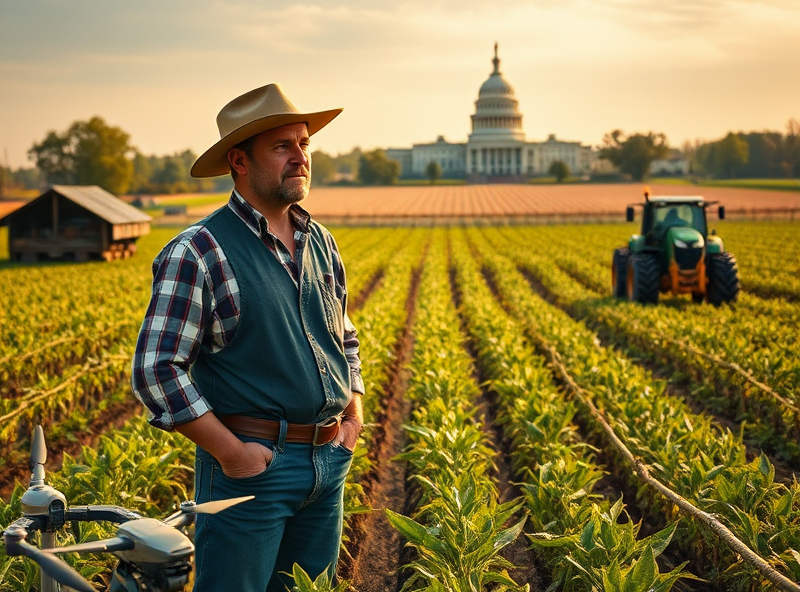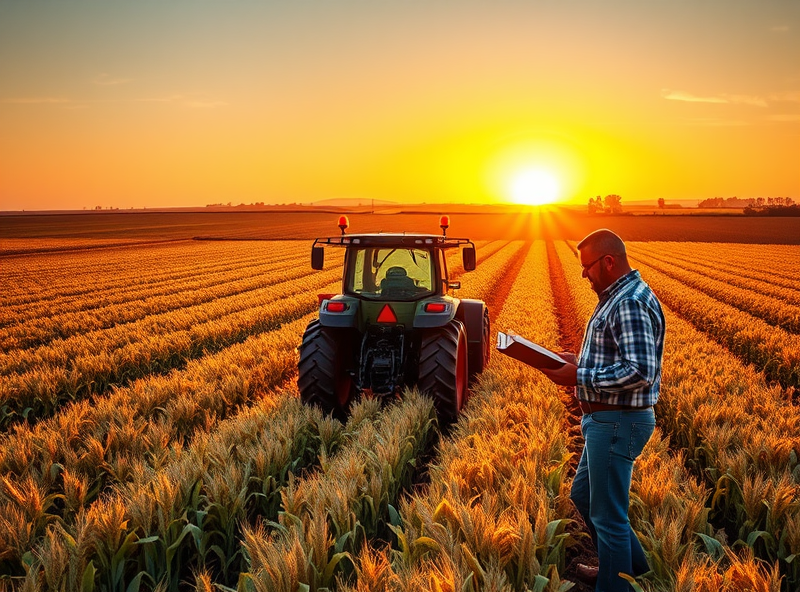Stabilizing Farmers’ Income and Rural Economies

Agricultural subsidies play a crucial role in stabilizing farmers’ income and supporting rural economies, especially in the United States. These subsidies act as a safety net for farmers, protecting them from unpredictable market fluctuations, adverse weather conditions, and global trade challenges. By ensuring a stable income, subsidies help farmers maintain their livelihoods and continue producing essential crops and livestock that feed the nation.
Moreover, subsidies contribute to the vitality of rural economies. When farmers have a steady income, they are more likely to invest in local businesses, hire workers, and purchase farming equipment, all of which stimulate economic growth in rural areas. This creates a ripple effect, benefiting not only the agricultural sector but also the broader community.
However, it’s important to ensure that subsidies are distributed equitably and effectively. By supporting small and medium-sized farms, rather than disproportionately favoring large agribusinesses, subsidies can foster a more sustainable and inclusive agricultural system. Policymakers and communities must work together to ensure that these programs truly benefit those who need them most, helping to build resilient rural economies and secure the future of farming.
Crop Bias and Favoritism in Subsidy Distribution

U.S. agricultural subsidies are designed to support farmers, stabilize food prices, and ensure a steady food supply. However, one of the most significant issues surrounding these subsidies is the uneven distribution of funds, often referred to as ‘crop bias.’ Essentially, certain crops—like corn, soybeans, wheat, cotton, and rice—receive the lion’s share of subsidies, while others, such as fruits, vegetables, and nuts, are left with minimal support. This favoritism stems from historical policies and lobbying efforts that prioritize commodity crops over specialty crops.
The consequences of this bias are far-reaching. Farmers growing unsubsidized crops often struggle to compete, which can discourage crop diversity and lead to overproduction of subsidized crops. Additionally, this imbalance impacts consumer choices, as the abundance of subsidized crops often translates into cheaper processed foods, potentially contributing to health issues like obesity. Addressing crop bias requires a reevaluation of subsidy policies to promote equity, sustainability, and better health outcomes for all.
For farmers and policymakers, understanding these dynamics is crucial. By advocating for fairer distribution of subsidies, we can encourage a more diverse agricultural landscape, healthier food options, and a more resilient farming economy.
International Trade Conflicts and WTO Challenges

The topic of U.S. agricultural subsidies is not just a domestic issue; it has significant implications for international trade. Subsidies, while designed to stabilize farmers’ incomes and support rural economies, often create tensions on the global stage. Many countries argue that these subsidies distort international markets by making U.S. agricultural products artificially cheaper, giving them an unfair advantage in global trade. This has led to trade conflicts with nations that feel their farmers are being undercut by subsidized U.S. exports.
The World Trade Organization (WTO) has been a key player in addressing these disputes. Several countries have brought cases against the U.S. to the WTO, challenging the legality of its subsidies under international trade rules. For example, the long-standing cotton dispute between the U.S. and Brazil highlighted how subsidies can escalate into full-blown trade conflicts. While the WTO often rules in favor of the complaining countries, enforcing these rulings can be a complex and prolonged process.
For policymakers, the challenge lies in balancing domestic agricultural needs with international trade obligations. As global trade becomes increasingly interconnected, finding a fair and sustainable approach to subsidies is more critical than ever. For readers, understanding these dynamics can shed light on how agricultural policies impact not just local economies but also global trade relationships. It’s a reminder of how interconnected our world has become and the importance of fair trade practices for long-term economic stability.
Policy Evolution and the Need for Reform

U.S. agricultural subsidies have long been a cornerstone of national policy, aimed at stabilizing farmers’ incomes and ensuring food security. However, as the agricultural landscape evolves, these subsidies have sparked debates about their efficiency and fairness. Initially introduced during the Great Depression to support struggling farmers, subsidies have since expanded to cover a wide range of crops and farming practices. While they have undoubtedly helped many farmers weather economic challenges, critics argue that the current system disproportionately benefits large agribusinesses over small, family-owned farms. Additionally, some policies have been linked to environmental concerns, such as overproduction and unsustainable farming practices. Reforming agricultural subsidies could involve shifting focus toward supporting sustainable farming, incentivizing innovation, and ensuring equitable distribution of resources. By addressing these issues, policymakers can create a more balanced and forward-thinking agricultural system that benefits farmers, consumers, and the environment alike.



